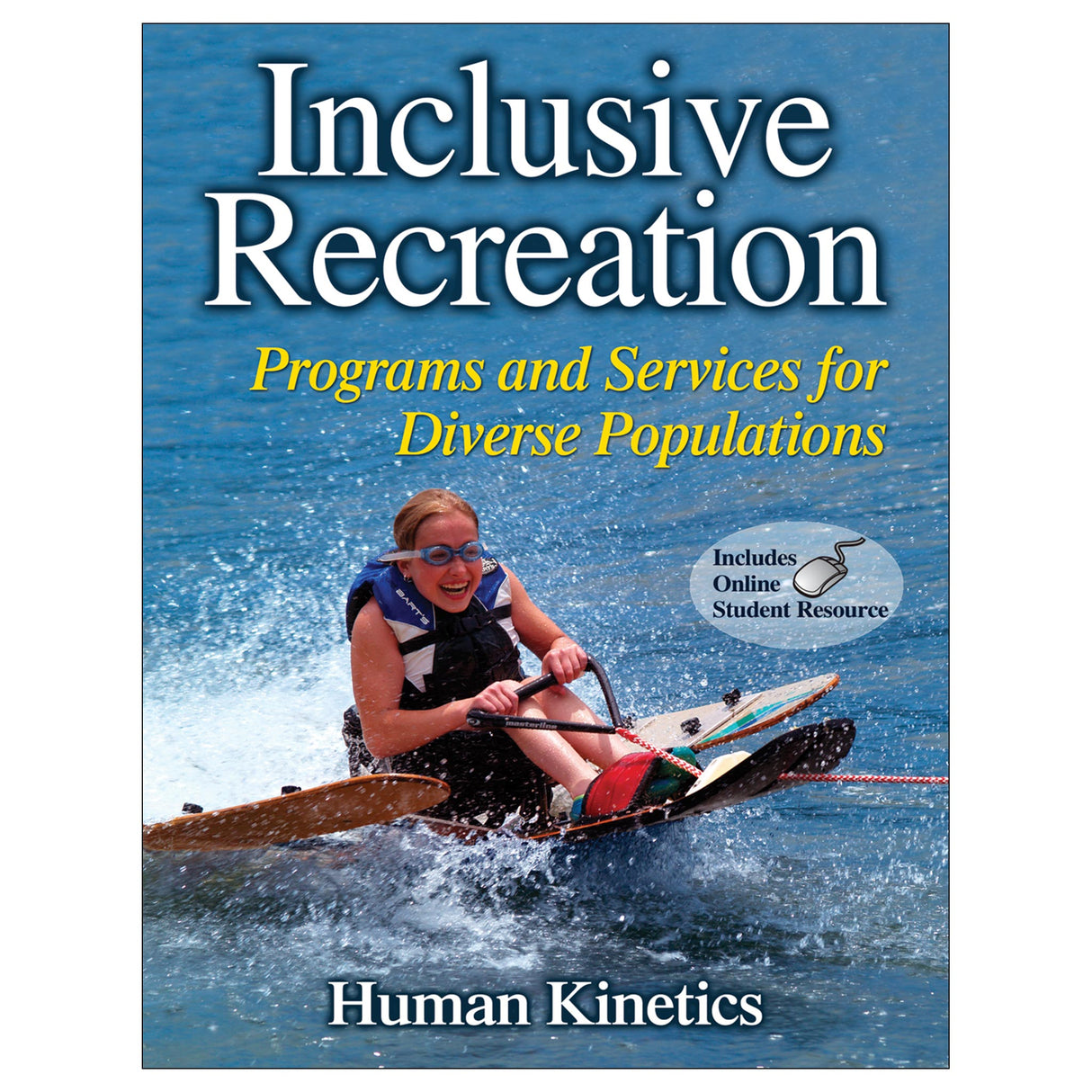Inclusive Recreation with Web Resource
Programs and Services for Diverse Populations
Author: Human Kinetics
$49.00 CAD
Everyone should have the opportunity to enjoy the benefits of recreation. As the demographics of our communities continue to change and expand, it will be more important than ever for recreation professionals to be prepared to provide access to anyone and everyone who wants to participate. In Inclusive Recreation: Programs and Services for Diverse Populations, students will learn to provide programs and services not only to individuals with disabilities but also to people of both sexes and all ages, cultures, ethnicities, races, and religions.
Written by 26 leading professors and professionals in the field, Inclusive Recreation provides the knowledge and skills that students will need in their careers to ensure that all people will be able to participate in the recreation programs they provide. The book features the following:
- The latest acknowledged theories in inclusion, as well as information on history, legislation, and cultural competence, to serve as the basis for students’ understanding of the field
- Strategies for becoming more conscious of diversity and disability and using appropriate language and communication skills so that students will be better prepared to consider and work with everyone in their community
- A thorough discussion of universal design in both facilities and services to help students plan inclusive experiences that appeal to the broadest possible audience
- Chapters on specific service areas, including sports, fitness and wellness, outdoor and adventure, arts and culture, aquatics, and tourism, so students will have a better feel for how inclusion strategies work in various programs
Inclusive Recreation also helps students learn more about the groups they’ll likely meet as professionals. They’ll look at the socio-demographic characteristics of each group, the factors that affect their recreation participation, and approaches for serving the needs of each population. They’ll also be encouraged to examine their own biases and think about how those biases could affect their ability to provide services to their clients. In addition, students will find information on staff training, designing respectful accommodations, and marketing, including pricing, promotion, and evaluation of service quality.
Throughout the book are examples of inclusive practices from a variety of sectors to help students understand how inclusion strategies work in real programs. Spotlight on Inclusive Recreation Programs sidebars highlight best practices from various countries, including Australia, Brazil, Canada, Japan, and the United Kingdom. Each spotlight includes a description of the program, a short history, and information on who is served by the program. Professionals in Action sidebars introduce professionals who have contributed to inclusive practices and help students explore their career options. The book also includes an online student resource (OSR), which features learning activities that assist studentts in applying the concepts being covered, assignments for each chapter that help them develop their critical-thinking skills and make personal connections to the content, and lists of Web sites to facilitate further discussion and research.
Inclusive Recreation offers theory and practical applications to prepare students to implement inclusive facility access, training, programming, and services for a variety of recreation activities. Readers will consider how recreation, leisure, and tourism activities can become accessible to all the community members they serve.
Audience
An undergraduate textbook for students pursuing careers in recreation, parks, leisure, or tourism; reference for professionals who want to increase inclusive program offerings.Preface
Part I Foundations of Inclusive Recreation
Chapter 1 Introduction to Inclusion
Jody H. Hironaka-Juteau, EdD, CTRS, RTC, and Tracey Crawford, CTRS, CPRP
Chapter 2 Inclusive Recreation History and Legislation
Rodney Dieser, PhD, and Kathleen G. Scholl, PhD, CTRS
Chapter 3 Building Cultural Competencies
Pamala Morris, PhD
Chapter 4 Inclusion Concepts, Processes, and Models
Terry Long, PhD, and Terry Robertson, PhD
Part II The Inclusion Process for Recreation and Leisure: Access and Training for Clients, Staff, and Volunteers
Chapter 5Marketing Inclusive Recreation Experiences
Stephanie West, PhD, and Erik Rabinowitz, PhD
Chapter 6 Providing Leisure Services for Diverse Populations
Monika Stodolska, PhD
Chapter 7 Staff Training for Inclusion
Kathleen G. Scholl, PhD, CTRS, and Torrie Dunlap
Part III Applying Inclusive Practices in Recreation and Leisure
Chapter 8 Universal Design in Recreation
Cindy Dillenschneider, MS Ed, and Cindy Burkhour, MA, CTRS, CPRP
Chapter 9Designing Inclusive Experiences
Nancy Nisbett, EdD, CTRS, RTC
Part IV Inclusive Recreation and Leisure Programs and Services
Chapter 10 Play and Playgrounds
Cindy Burkhour, MA, CTRS, CPRP, and Joan Almon
Chapter 11 Inclusive Sports
Ronald Davis, PhD
Chapter 12 Inclusive Recreation, Fitness, and Physical Activity
Sheila Swann-Guerrero, CTRS, and Amy Rauworth, MS, RCEP
Chapter 13 Inclusive Arts and Culture
Kathlyn M. Steedly, PhD
Chapter 14 Inclusive Aquatics
MaryBeth Pappas Baun, MEd
Chapter 15Inclusive Outdoor Recreation and Summer Camps
Cindy Dillenschneider, MS Ed, and Frederick Green, PhD, CTRS
Inclusion at Summer Camp: The Perfect Problatunity
Terry Long, PhD, and Terry Robertson, PhD
Chapter 16 Inclusive Adventure and Challenge Courses
Inclusive Adventure
Alison Voight, PhD, CTRS, and Alan Ewert, PhD
Inclusive Challenge Courses
Brent Wolfe, CTRS
Chapter 17 Inclusive Travel, Tourism, and Amusements
Alison Voight, PhD, CTRS, and Shu Cole, PhD
Appendix A Healthy People 2010 and the International Classification of Functioning, Disability, and Health Model
Appendix B National Recreation and Park Association Position Statement on Inclusion
Appendix C Person-Related Factors Influencing Capability
References and Resources
Index
Begin your agency's inclusion process with these 5 steps
Textbook's special features help students better understand inclusion strategies
Instructor Guide. The instructor guide contains sample course syllabi, chapter outlines, discussion questions, direct links to additional resources on the Internet, and a folder housing digital assets from the book, such as photos, tables, and artwork.
Test Package. The test package consists of ready-made multiple-choice, fill-in-the-blank, true-and-false, and essay and short-answer questions.
Presentation Package. The presentation package includes slides covering all 17 chapters in PowerPoint format.





